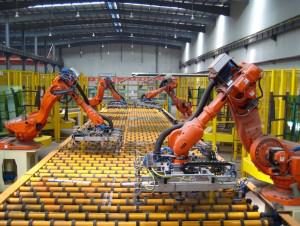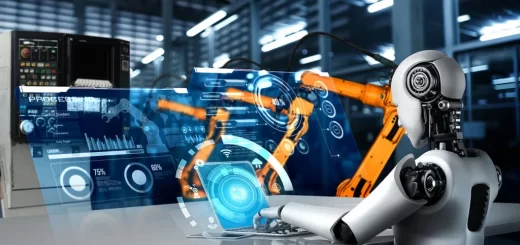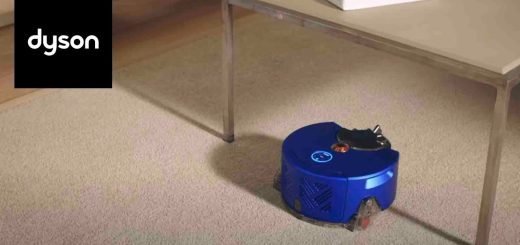Automation in manufacturing uses , advantages and disadvantages
The manufacturers are using machine automation & controls to produce high quality products faster & more efficiently , These automated systems offer critical information to help the managers make good business decisions , The ability to produce the products while providing the data is an important part of automation .
Automation in Manufacturing
Technology has changed the nature of manufacturing , In the past , manufacturing & fabrication were all done by hand by the people , Now the computers & technology have penetrated the industry , Automation becomes the competitive advantage in today’s manufacturing world , Automation has allowed for the companies to mass produce the products at outstanding speeds and with great repeatability & quality .
In Automatic control or Automation , You can use many control systems for operating the equipment such as machinery , processes in the factories , The boilers & the heat treating ovens , switching on telephone networks , steering & stabilization of the ships , the aircraft & the other applications and the vehicles with minimal or reduced human intervention .
Although machine automation becomes the resource for remaining competitive in the manufacturing industry , there are some factors to be considered to be competitive & to get a return on the investment , Depending on the operations , automation may or may not be a good fit , If it is a small operation with low production quantities , the initial investment of purchasing the automated machines would not be economical .
One of the most important application areas for automation technology is manufacturing , To many people , The automation means manufacturing automation , There are three types of automation in the production that can be distinguished which are fixed automation , programmable automation and flexible automation .
Fixed automation stands for the automated production facility in which the sequence of processing operations is fixed by the equipment configuration , It is known as hard automation , the programmed commands are contained in the machines in the form of the cams , the gears , wiring & the other hardware that is not easily changed over from one product style to another .
Fixed automation has high production rates & high initial investment , It is suitable for the products that are made in large volumes , Examples of fixed automation contain machining transfer lines found in the automotive industry , the automatic assembly machines & certain chemical processes .
The computers carry out the sequential control & feedback control , a single computer will do both in the industrial application , Programmable logic controllers (PLCs) are a type of special purpose microprocessor that replaced many hardware components such as the timers & sequencers used in relay logic type systems .
The general purpose process control computers have replaced stand alone controllers , with a single computer able to perform the operations of hundreds of controllers , Process control computers can process data from a network of PLCs .
Automation are carried out by many means such as mechanical , hydraulic , pneumatic , electrical , electronic devices & the computers , Modern factories , the airplanes & the ships use all these combined techniques .
Automation in manufacturing advantages
Machine automation improves the product quality , accuracy , repeatability , It offers less human error , When the machine is programmed to perform a repeated task , Machine automation offers higher volume of production , Automated equipment is capable of producing much larger production volumes than a largely human workforce and it will increase the profitability .
Automation will speed up the production time , There is no one perfect & we are all prone to making the mistakes , Which is why the machine that performs repeated tasks is less likely to make the mistakes than the employee , when the automated machine is programmed to perform the task over & over again , the accuracy compared to an employee is far greater .
Machine automation offers less employee costs , With a smaller human workforce , When you add the automated machines to the operation , So , You need less employees to get the job done , It causes less safety issues , which leads to financial savings , there are great costs that are diminished or reduced such as the payroll , health care , the benefits & sick days .
Automation decrease the number of employees who perform the tasks that can be dangerous & prone to the injury , So , It increases the safety & the work environment will be safer , Automation mitigates the effects of the labor shortages , In the skilled trades , this pro is especially powerful because we are dealing with a deficit of skilled workers able to perform the roles required in our factories , plants and sites .
Automation eliminate mindless tasks , There’s a worthy argument that automation merely eliminates the mindless , manual , clerical tasks that are routine & boring , So , we are ultimately improving the general level of working conditions .
Machine automation increases worker safety , If you transfer your workforce from active , hands-on positions , to supervisory roles , you’ve increased the overall safety , This is a pretty major selling point for automation , Benefit of automation contain labor savings , savings in electricity costs & the material costs , and the improvements to quality , accuracy & precision .
Automation in manufacturing disadvantages
When you have the machine that can perform a certain task , it limits the flexibility & variety of tasks that the employee could do , You will have unpredictable costs which may exceed the actual cost saved by the automation itself , such as the research & the development costs of automating process and the cost of training employees to operate the automated machines .
Machine automation causes more pollution than the human worker , Different types of the machines operate using the motor which may require the gases or the chemicals in order to operate , This can cause an increase in the pollution in the workplace .
Automation in manufacturing comes with a large capital investment , The automated machines can be one of the most costly operating costs for the company , It increases unemployment rates as there are less employees , Automation increases the efficiency in industry but it will cause a loss of human jobs due to machines .
The employee can perform a flexible variety of tasks , whereas the machine is limited to what it’s been programmed to do , There is a world of unpredictable or unknown costs that come with new technology , such as maintenance , repair , supervision , training , etc .
Industrial robot ( Auto industry ) uses , advantages and disadvantages















I agree when you mentioned that incorporating automation in the manufacturing industry can help reduce the number of employees. This would be beneficial as the company gets to reduce the risk and injury of people who are working in the factory. I would like to think if a company wants to ensure the safety of the workplace, they should invest in automated machines such as packaging equipment by getting it from a reliable supplier.